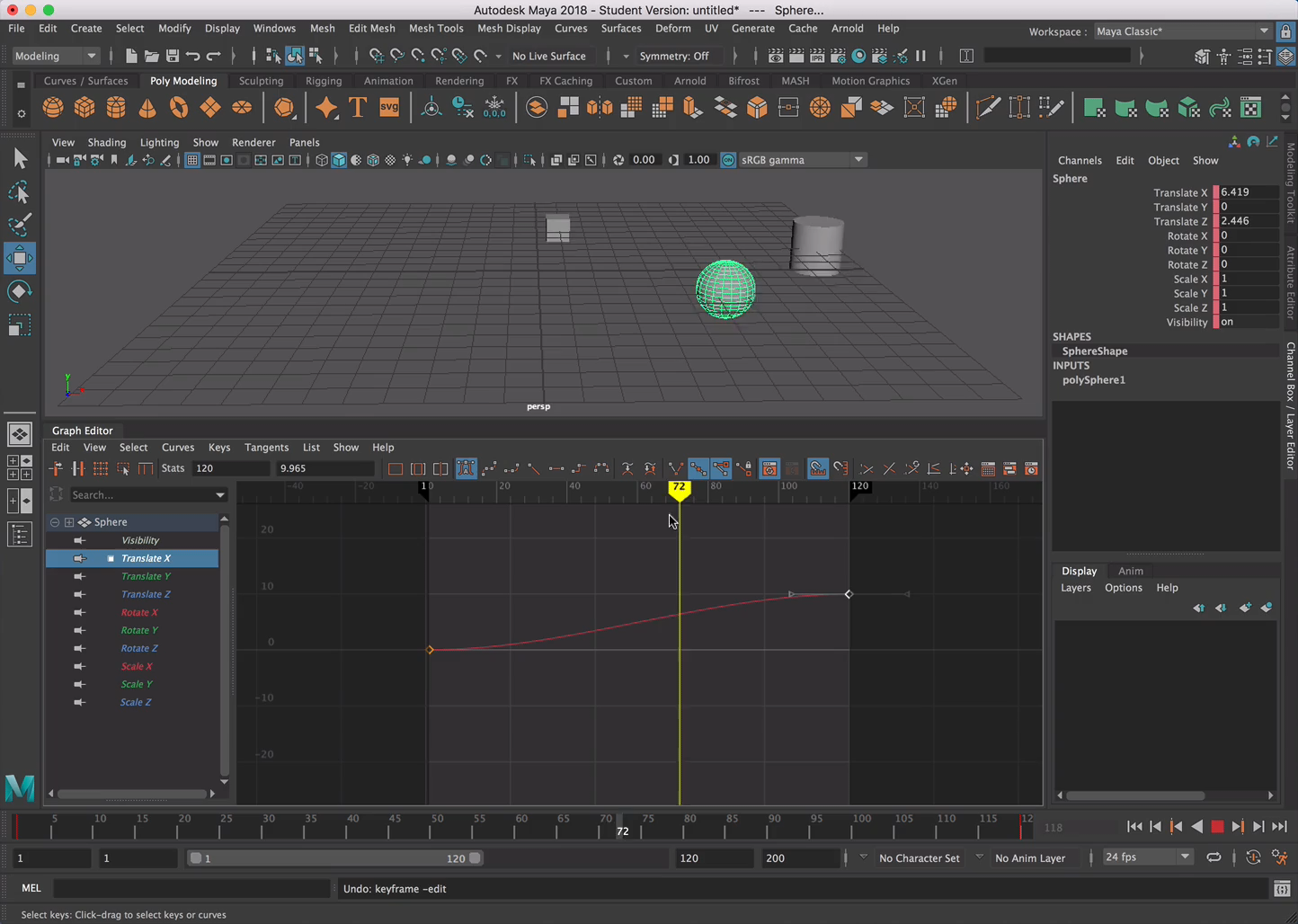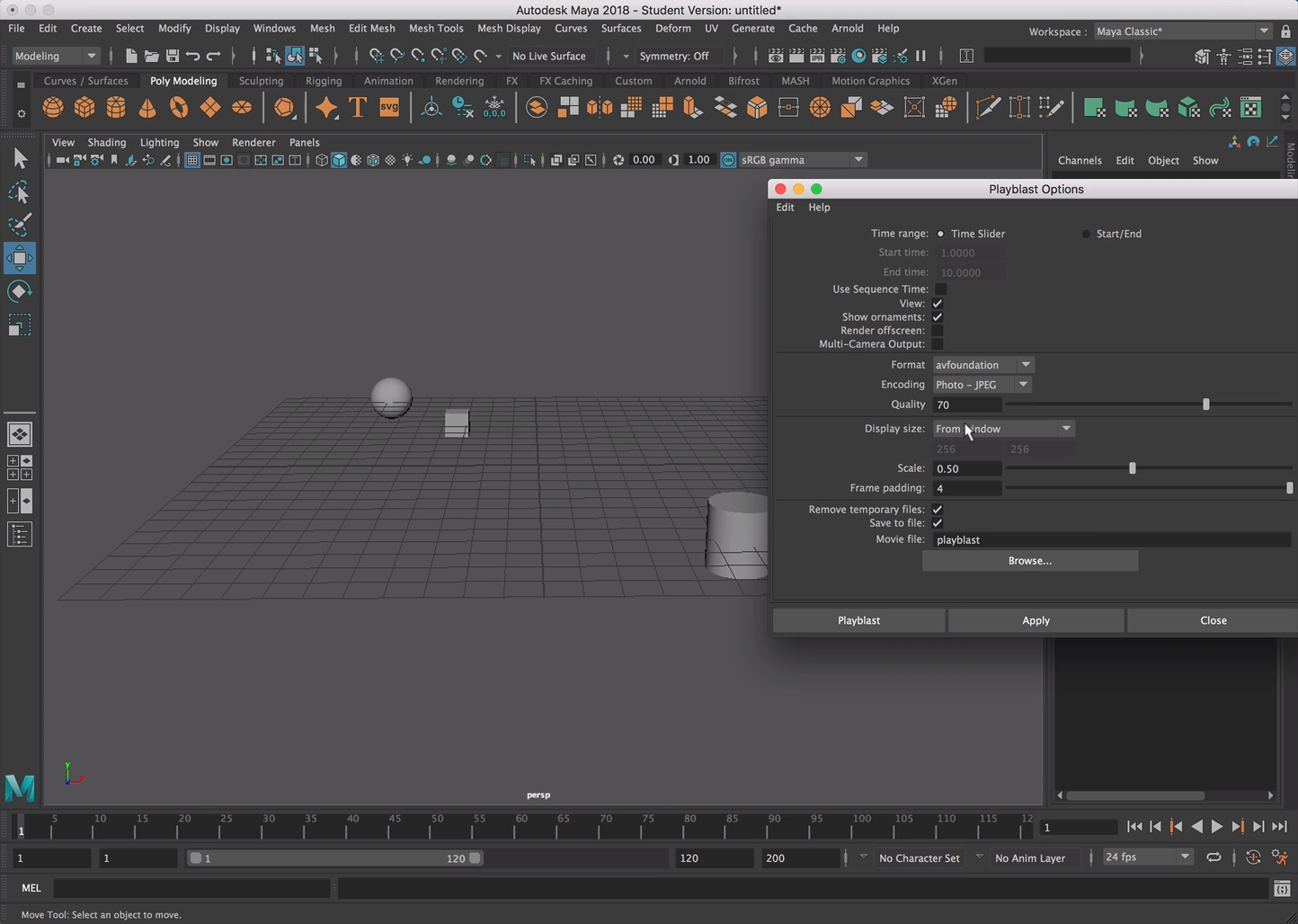Module 3 - Straight Ahead and Pose to Pose
Overview
These are two different approaches to the actual drawing process. "Straight ahead action" means drawing out a scene frame by frame from beginning to end, while "pose to pose" involves starting with drawing a few key frames, and then filling in the intervals later. "Straight ahead action" can tend to create a more fluid, dynamic illusion of movement, and is better for producing realistic action sequences. On the other hand, it is hard to maintain proportions, and to create exact, convincing poses along the way. "Pose to pose" works better for dramatic or emotional scenes, where composition and relation to the surroundings are of greater importance. A combination of the two techniques is often used.
Straight Ahead & Pose to Pose
Computer animation largely removes the problems of proportion related to "straight ahead action" drawing; however, "pose to pose" is still used for computer animation, because of the advantages it brings in composition. The use of computers facilitates this method, as computers can fill in the missing sequences in between poses automatically. It is, however, still important to oversee this process and apply the other principles discussed.
As with squash and stretch and all of the principles how and when you should use straight ahead vs. pose to pose techniques depends on each shot you are producing the style you are going for and most importantly your comfort with the process. Sometimes you will want to analyze a shot from start to finish looking at each bit individually while other times you will want to just let the imagery flow from frame to frame. There is no right answer for every shot. However, you should ALWAYS consider these approaches.
When it comes to the difference between these 2 processes it can be confusing to know when you should and should not use each one. The reality is there is no right or wrong answer and it will largely be decided by a couple of factors:
- How you see the world
- What you practice and perfect
Some people have an innate ability to perceive timing and spacing and scale incredibly well. Those people might naturally gravitate toward practicing and perfecting a straight ahead techniques.
Some people have an innate ability to break down things in life into smaller and smaller and more refined parts whether thats shape, time, motion, etc. These individuals might naturally gravitate toward envisioning, practicing and perfecting pose to pose techniques.
The strong reality is that most of us are going to find ourselves somewhere in-between and will naturally blend the breakdown of things into smaller parts while working through those parts little by little to be more refined. Sometimes pose to pose, sometimes straight ahead. However, Pose to pose is probably more prevalent.
To help you see the beauty and flow that can come from a masterful straight ahead animation technique, check out these two animated short films
Do yourself a favor and checkout more from Glen Keane on YouTube.
Weight
This week we are learning about weight. Objects that have different weights act differently.
Heavy and light objects:
Light objects tend to bounce longer and higher. This beach ball is so light, it almost feels like it floats slightly. This ball feels very light because it is mostly air. Just because it is large doesn't mean it has more mass.
Heavy objects can be tricky. One thing to keep in mind is that heavy objects take longer to start moving, but can move quickly once in motion. This has to do with the mass of the object more than the size.
Notice the bounces are very small compared to the distance the ball drops from. There are only a couple of these small bounces before the ball stops and rolls. The ball feels very heavy.
Some misconceptions about heavy and light objects might be that, to make things look heavy, they have to move slow all the time. Or light objects should move very quickly because they aren't as heavy.
This is not the case. The real key is in their acceleration.
Inertia - A property of matter by which it continues in its existing state of rest or uniform motion in a straight line, unless that state is changed by an external force (from google Dictionary).
Do a bit more research on your own. Think about 2 different types of ball that have a big difference in weight.
Assignment
This week, we will be doing another ball bounce exercise. This time you will be animating 2 balls simultaneously. One a very light ball (like a beach ball) and the other a very heavy ball (Like a bowling ball). You are going to want to work through the video reference, thumbnail, blocking, splining, show a peer and polish workflow your planning Thumbnails, and Video Reference to complete the second Dual Bouncing Ball Assignment in Maya. I don't personally own a bowling ball or a beach ball so using video reference found on something like YouTube is fine.
We will be using a new bouncing ball 'scene DualBouncingBall_001.ma' for this assignment. It has 2 copies of the bouncing ball rig setup in the scene ready to be animated. You can download the Dual Bouncing Ball Maya Project file by clicking the button to right in the resources well here. Please use this file for your assignment.
Once you have a complete polished animation you should produce a playblast video for submission.
Once complete submit your final playblast MP4 video to Assignment 3 on UNM Canvas
-
Class Lecture
Attend Class Lecture -
Class Instruction
Review Module Written & Video Material -
Lab & Exercises

